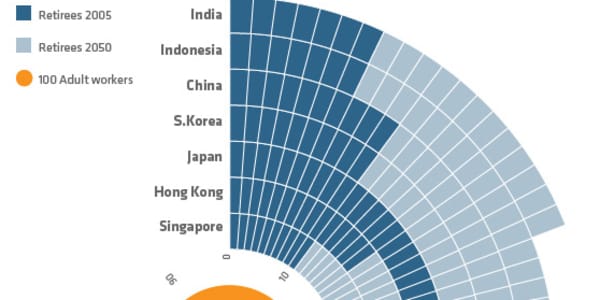
The size of China's workforce declined for the second straight year in 2013, a trend that is set to continue and have widespread implications for emerging markets, according to experts.
The country's working age population fell by 2.44 million to 919.54 million in 2013, marking the second consecutive year of decline, the National Bureau of Statistics (NBS) reported on Monday.
The working age population - defined as those from 15 to 59 - accounted for 67.6 percent of the country's overall population – down 1.6 percentage points from the previous year.
"From the perspective of the world economy, the turn in the dynamics of the Chinese workforce, still the world's largest, will be the most important shift," Sanjeev Sanyal, global strategist at Deustche Bank wrote in a reported dated September 2013.
(Read more: The aging in Asia face a new decade like no other)
China's shrinking workforce will spur the transformation of the country from "factory to the world" into the "investor to the world," Sanyal said. This will create opportunities for other emerging markets such as Indonesia, Philippines and India to enter market segments being vacated by China, he said, including export-oriented manufacturing.
Sanyal (who defines working age as 20-59) predicts China's workforce will decline modestly from 853.7 million in 2015 to 848.9 million by 2020, but then will then drop sharply to 781.8 million by 2030, 743 million by 2040 and 650.9 million in 2050.
In December, China's top legislature approved a loosening of the country's controversial one-child policy that was introduced in the 1970s in an effort to address demographic challenges including a shrinking labor force, rising elderly population and male-female imbalances.
(Read more: China formally eases one-child policy, abolishes labor camps)
However, Sanyal says a large decline in the Chinese workforce is now unavoidable irrespective of the removal of the one-child policy.
Due to a skewed gender ratio, China no longer has enough child-bearing age women to stabilize its population, he said. In the mainland, there are almost 118 boys born for every 100 girls.
China also released key statistics on wealth inequality on Monday.
The country's Gini coefficient, a measure of income inequality where zero is complete equality and one maximum inequality, fell to 0.473 in 2013 from 0.474 in the previous year.
While this was an improvement, a Gini-coefficient of 0.4 is regarded as the international warning level for dangerous levels of inequality.
(Read more: World's richest have same wealth as 3.5 billion poorest)
—By CNBC's Ansuya Harjani. Follow her on Twitter:@Ansuya_H





